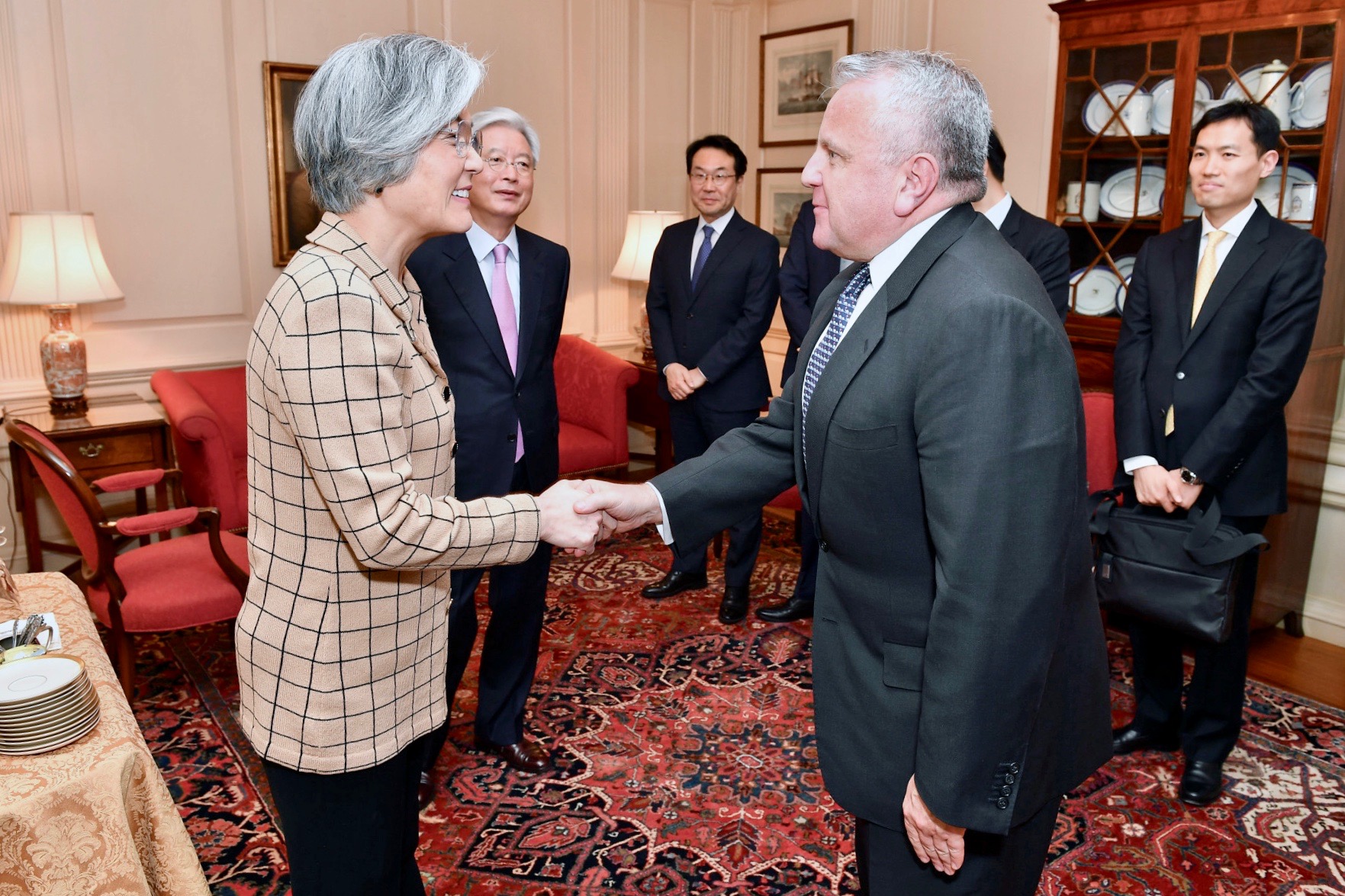Days before the meeting of US State Secretary Mike Pompeo with the North Korean leader Kim Jong-un to discuss the next summit with Donald Trump, South Korean Finance Minister Kang Kyung-wha indicated that the US had been considering an end-of-war declaration.
She added that her government would seek an exemption from the international sanctions on the North, so it could proceed to undertake multiple projects with the North. Many of these were agreed upon by Kim and South Korean President Moon-Jae-in in Pyongyang last month.
The Pyongyang summit took place at a time when US-North Korea talks had hit a rough patch. The US accused the North of not making sufficient progress with denuclearization, and the North in turn accused the US of demanding denuclearization without agreeing to formally end the war.
The three-day Pyongyang summit, which concluded on September 20, sought to find middle ground and succeeded in effecting a breakthrough. On the second day of the summit, Kim agreed to “permanently” shut down Tongchang-ri, the most important launchpad and missile engine testing facility in the country.
Further, he declared he would shut down the Yongbyon nuclear facility, where the nuclear material used in the recent tests had reportedly been produced, if the US took a corresponding step towards putting an official end to the state of war. Later, Moon pointed out that this was the middle ground which both North and South Korea had agreed to pursue, and which the US had be convinced of.
Moon told reporters at a press conference on September 20 in Seoul that both the Koreas wanted from the US an “end-of-war declaration”, which, he clarified, was not a final peace treaty but a political declaration that will serve “as starting point for peace negotiations for the signing of a peace treaty, and that when the North achieves complete denuclearization, the treaty will be signed and, at the same time, the North-U.S. relations will be normalized.”
Moon added that until the final peace treaty is signed, “the status of the UN Command or the need for the stationing of U.S. troops will not be affected at all.” He was addressing US fears on the future of its troops stationed in the region.
Kim had also called for a second summit with US President Donald Trump to negotiate the further course of denuclearization. While Trump enthusiastically greeted the proposal, sections of the US establishment appear to have resisted the proposal on the grounds that any move towards a treaty will eventually require removal of the US soldiers from the region. Once peace is officially established, Russia and China, not to mention Kim himself, might begin protesting the continued presence of US armed forces in the region.
The week after the Pyongyang summit, on the sidelines of the 73rd UN General Assembly in New York, Moon again said he would try and convince the US to make the ‘end of war’ declaration by the end of the year.
“The US understanding on the war-end declaration has made a significant progress. The key is what content will be contained in the war-end declaration,” the South Korean Foreign Minister said on October 5. This appears to indicate that sufficient pressure has been mounted on the US to not derail the peace process in which the populations of both the Koreas are deeply invested.
It was in this context that she also made the declaration about exemptions on sanctions. During the Pyongyang summit, CEOs of South Korean public and private enterprises had met the North Korean Deputy Prime Minister to discuss reopening old businesses in the country which were shuttered down as tensions soared over North Korea’s missile tests.
Moon is known to have discussed with Kim his plans to develop an ‘’H-shaped economic belt’, connecting economic zones on the east coast and the west coast, with another line connecting the two stretches through the Demilitarized Zone. The project would including laying roads and railways connecting the two countries, as well as the development of entire cities in the North.
It is only the sanctions that stand in the way of realizing Moon’s ambitious economic plans.
Seeking to strike a balance, South Korean foreign minister said, “Our stance is that we will continue to abide by the sanctions against North Korea and continue collaborating with North Korea without undermining the frame of the international sanctions,” indicating that South Korea would seek an exemption to carry out its plans.





